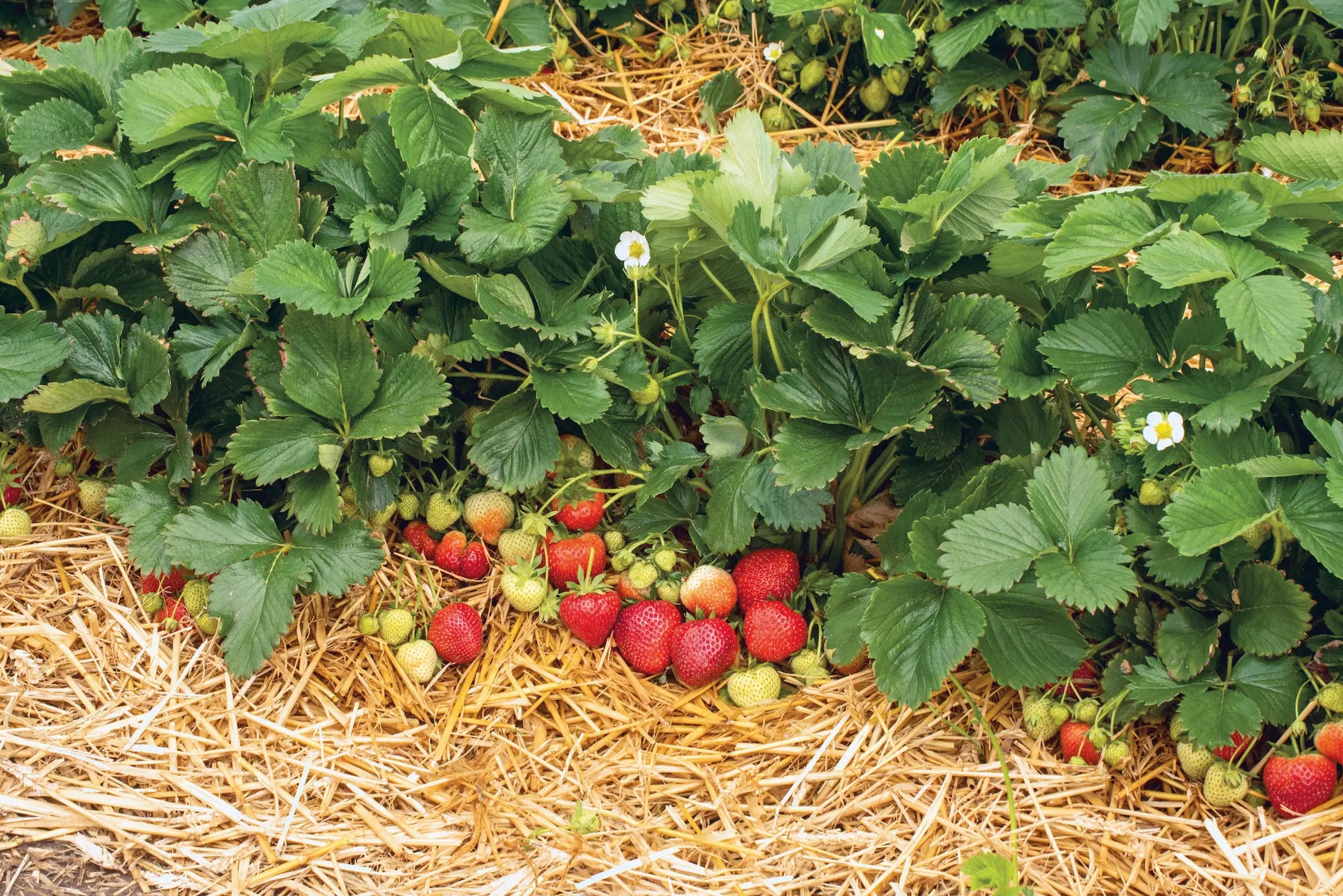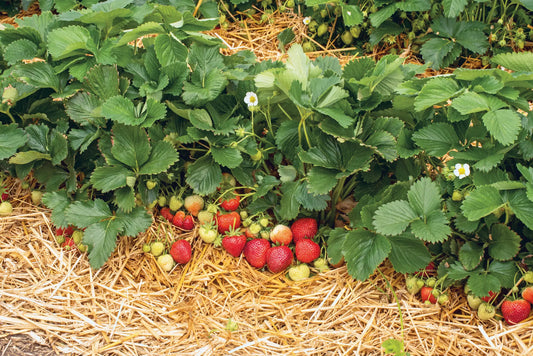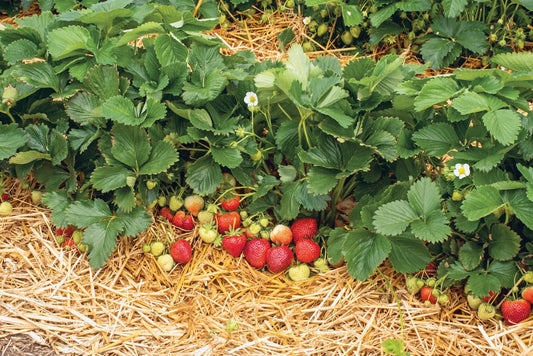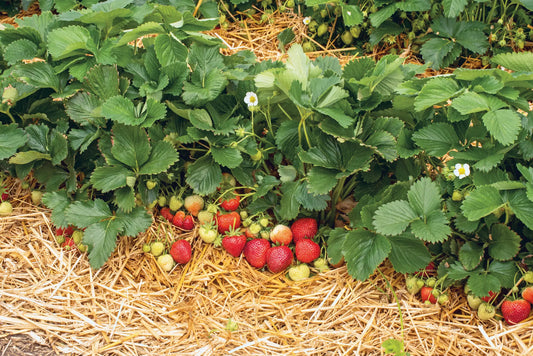-
Delivery from 10 plants to France, Switzerland and Europe
Delivery method -
Strawberry Plant Wholesale Supplier
About Us -
Quality Strawberry Plants
Strawberry technical itinerary -
Secure payment
Our Payment Terms
Dahli Potted Strawberry Plant
Dahli Potted Strawberry Plant
Price per unit (€ excluding VAT) excluding shipping. Our prices are based on volume. We offer you the best option based on your needs.
 - Add the desired date to your quote request
- Add the desired date to your quote request
- Buy now and get it delivered when you're ready to plant
- Delivery from 10 plants to France, Switzerland and Europe
Couldn't load pickup availability
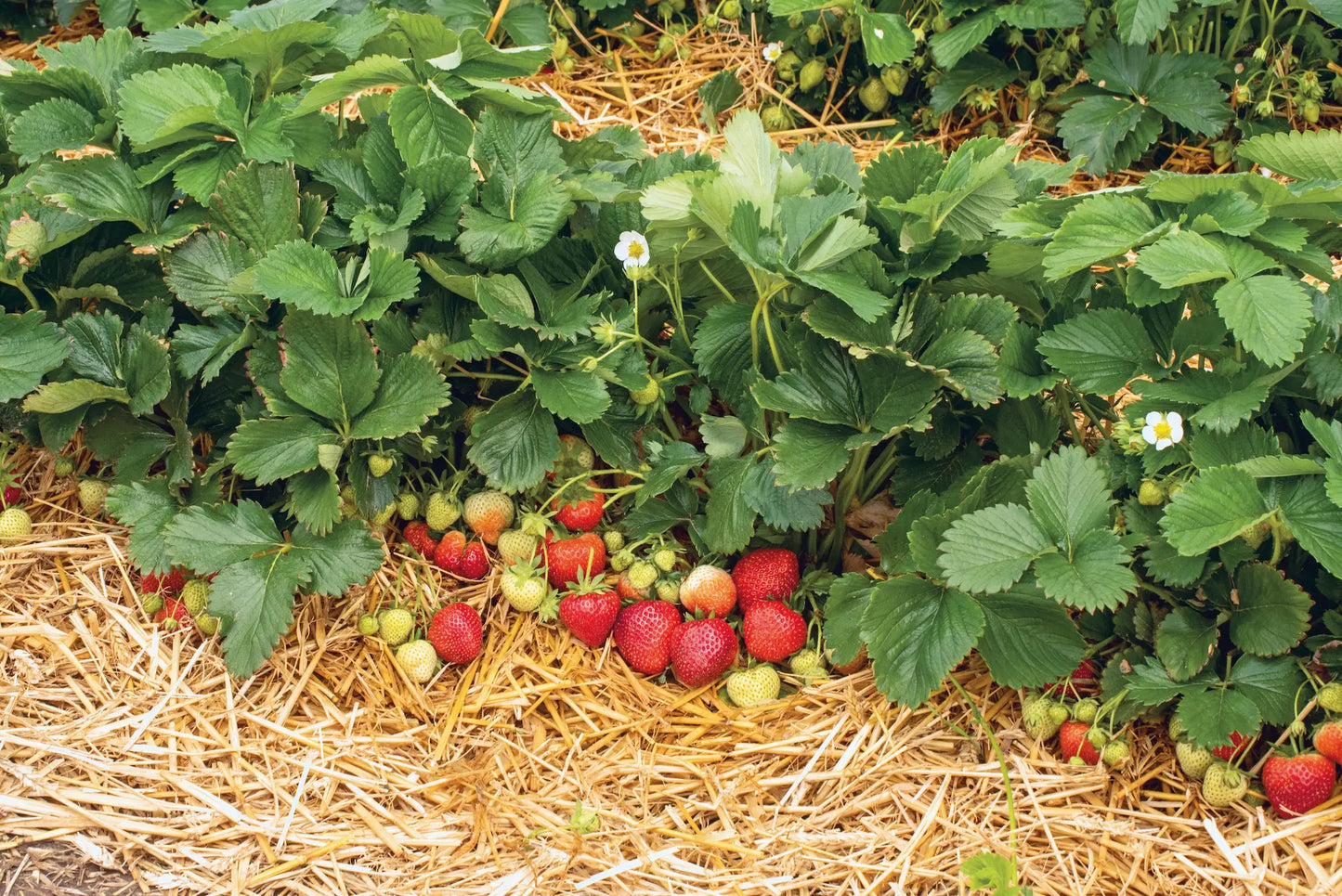
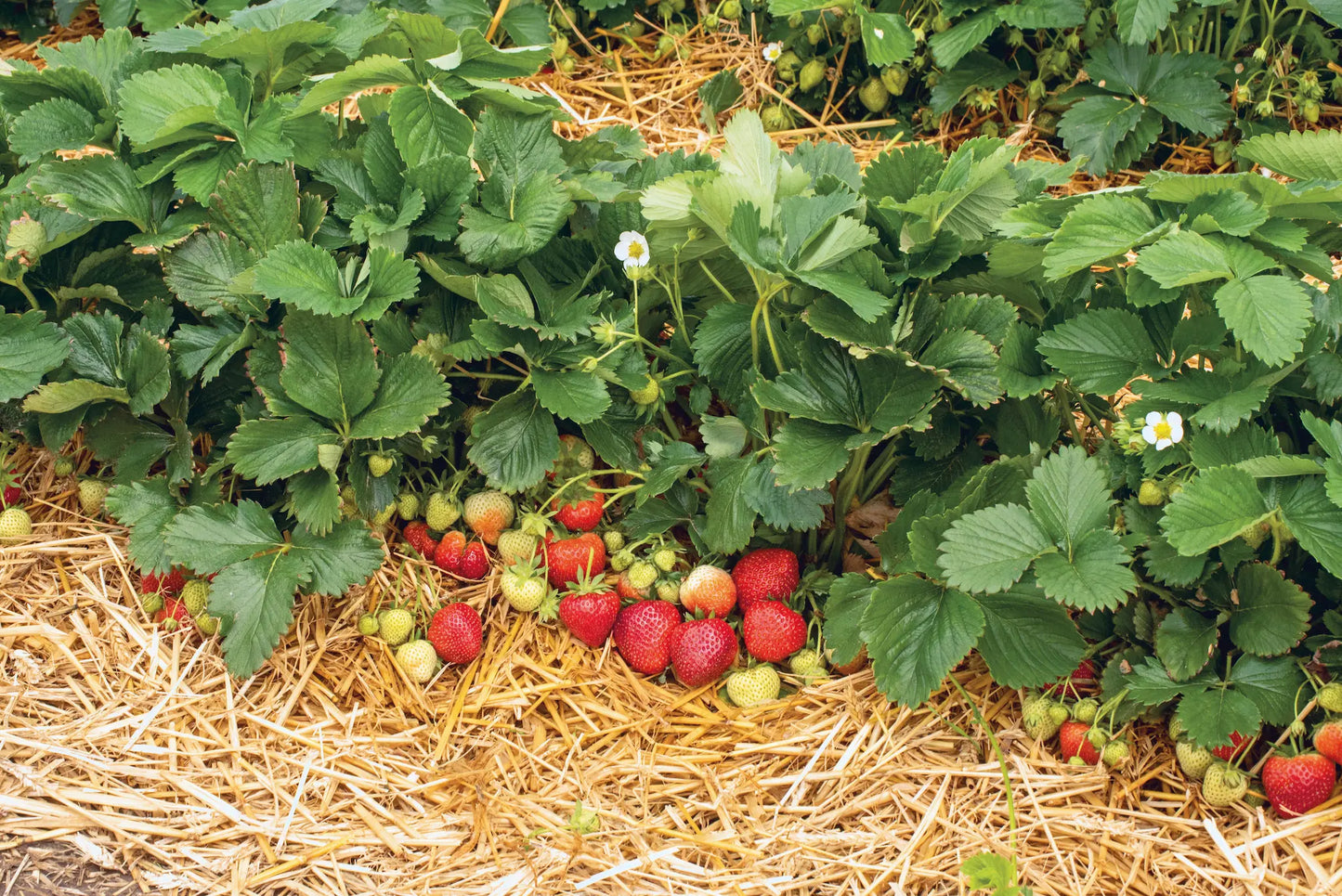
Collapsible content
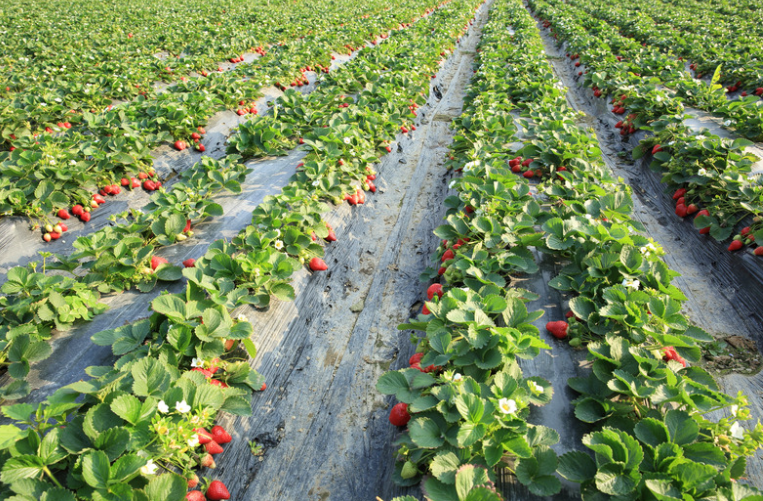
Strawberry Plant Buying Guide: What Type of Plants? For What Market Opportunity?
Which format should you choose: refrigerated, fresh, tray-plants, waiting bed, or plugs? Compare yields, costs, and harvest times at a glance.
Download the PDF guide (13 pages)
Why read this guide?
- Comparison tables: yield (300–600 g/plant), cost & labor.
- Reservation/delivery calendar for each format.
- Minimum order: 20 to 1,000 plants depending on the type.
- Full-field vs. above-ground case studies to maximize margin.
Overview of the 5 professional formats
Detailed comparison of formats
| Format | Yield (g/plant) |
Harvest time | Min. order | Average cost |
|---|---|---|---|---|
| Fridge | 250 – 400 | 120 days | 20 plants | 0.20 – 0.45 € |
| Costs | 280 – 420 | 140 days | 200 plants | 0.20 – 0.45 € |
| Tray plant | 400 – 600 | 90 days | 500 plants | 0.75 – 0.80 € |
| Waiting Bed | 300 – 500 | 105 days | 500 plants | 0.50 – 0.60 € |
| Motte | 230 – 350 | N+1 | 1,000 plants | 0.35 – 0.50 € |
Delivery schedule
| Plant type | Jan | Feb | Mar | Apr | May | Jul | Jul | Aug | Sep | Oct | Nov | Dec |
|---|---|---|---|---|---|---|---|---|---|---|---|---|
| Fridge | ||||||||||||
| Tray plants | ||||||||||||
| Waiting Bed | ||||||||||||
| Motte | ||||||||||||
| Costs |
Which format for which scenario?
Full field controlled budget
Fridge or Fresh : cost 2 x lower than tray plants, planting flexibility.
Above ground in greenhouse
Tray-plants : harvest 90 days after planting, uniform size, reduced labor.
Late planting
Mottes : planting July–August, rapid recovery, harvest the following year.
Ready to plan your plantings?
Download the complete guide Request a quoteFrequently Asked Questions
Is the guide free?
Yes, no fees or obligation to purchase.
How to download it?
Click the button “Download the guide” ; the PDF opens immediately.
Can I request a personalized quote?
Of course: write to us at contact@fraisiverse.com and an agronomist will respond to you within 24 hours.
Choosing the right strawberry varieties for your plot
Extend your harvest season by up to 5.5 months with our "early + season + everbearing" method. Compare 78 cultivars, sizes, and markets.
Download the PDF guide (17 pages)
4 axes to decide quickly
- Harvest Window : Early, Seasonal, or Everbearing? Combine them for 5.5 months .
- Commercial outlet : direct sales, long circuit, processing or freezing.
- Type of plants : fridge, fresh, root ball, tray plants… adapt your investments and your schedule.
- Growing conditions : open field, soilless, greenhouse; target consistent yield and size.
Axis 1: Select your harvest window
Example of recommended mix:
- Ciflorette (early) → Rubis des Jardins (season) → Charlotte (remontant).
- 5.5 months of continuous production, ideal for direct sales.
Axis 2: Sell at the right market
Direct sales
Ciflorette, Charlotte, Mara des Bois: premium taste sought after by consumers.
Long circuit / GMS
Magnum, Clery, Dream: uniform size, 95% class 1 fruit.
Transformation
Darselect, Mara des Bois – high sugar content and stable aroma.
Freezing
Honeoye, Belrubi – firm flesh, keeps well in the cold.
Axis 3: Choose the right type of plants
| Kind | Reservation | Delivery | Highlights |
|---|---|---|---|
| Fridge | All year round | Dec. → Aug. | Flexibility & price |
| Tray plants | Feb. → June | Nov. → Apr. | Above ground, harvest 90 days after planting |
| Motte | Sep. → May | Jul. → Sep. | Ideal for open fields, harvest N+1 |
| Costs | Feb. → Aug. | Sep. → Nov. | Young plants, rapid recovery |
Axis 4: Optimize your technical constraints
Tray plants guarantee +25% yield and simplified harvesting above ground; ideal for mechanizing your production and ensuring consistent size.
Frequently Asked Questions
Is the guide really free?
Yes, with no cost or obligation to purchase.
How to download it?
Just click the button “Download the guide” at the top of the page; the PDF opens immediately.
Can I request a personalized quote?
Of course: contact us via our contact page .
When to plant? When to harvest?
Do you want to start a strawberry farm but don't know when to reserve your plants, when to plant them or even harvest them?
Because we love 🍓 (with just a little sugar), we're going to do the work for you. On this page, you'll find the growing steps for each type of strawberry plant. When to order? What is the delivery period? When to plant? And finally, when to harvest?
Production Calendar - Frigo Strawberry Plants
| Production Calendar - Frigo Strawberry Plants | ||||||||||||||||||||||||
|---|---|---|---|---|---|---|---|---|---|---|---|---|---|---|---|---|---|---|---|---|---|---|---|---|
| Jan | Feb | Mar | Apr | May | Jun | Jul | Aug | Sep | Oct | Nov | Dec | |||||||||||||
| Reservation | ||||||||||||||||||||||||
| Deliverable | ||||||||||||||||||||||||
| Recommended planting | ||||||||||||||||||||||||
| Harvest | ||||||||||||||||||||||||
Production Calendar - Fresh Bare-Root Strawberry Plants
| Production Calendar - Bare Root Strawberry Plants | ||||||||||||||||||||||||
|---|---|---|---|---|---|---|---|---|---|---|---|---|---|---|---|---|---|---|---|---|---|---|---|---|
| Jan | Feb | Mar | Apr | May | Jun | Jul | Aug | Sep | Oct | Nov | Dec | |||||||||||||
| Reservation | ||||||||||||||||||||||||
| Deliverable | ||||||||||||||||||||||||
| Recommended planting | ||||||||||||||||||||||||
| Harvest | ||||||||||||||||||||||||
Production Calendar - Strawberry Plants Plugs
| Production Calendar - Strawberry Plants Motte | ||||||||||||||||||||||||
|---|---|---|---|---|---|---|---|---|---|---|---|---|---|---|---|---|---|---|---|---|---|---|---|---|
| Jan | Feb | Mar | Apr | May | Jun | Jul | Aug | Sep | Oct | Nov | Dec | |||||||||||||
| Reservation | ||||||||||||||||||||||||
| Deliverable | ||||||||||||||||||||||||
| Recommended planting | ||||||||||||||||||||||||
| Harvest | ||||||||||||||||||||||||
Production Calendar - Strawberry Plant Tray
| Production Calendar - Strawberry Plants Motte | ||||||||||||||||||||||||
|---|---|---|---|---|---|---|---|---|---|---|---|---|---|---|---|---|---|---|---|---|---|---|---|---|
| Jan | Feb | Mar | Apr | May | Jun | Jul | Aug | Sep | Oct | Nov | Dec | |||||||||||||
| Reservation | ||||||||||||||||||||||||
| Deliverable | ||||||||||||||||||||||||
| Recommended planting | ||||||||||||||||||||||||
| Harvest | ||||||||||||||||||||||||
Our Growing Guides by Plant Type / Our Growing Tips
Our online advisor: Fraisibot
Our technical itineraries by type of strawberry plant:
Technical Itinerary for Growing Strawberries from Frigo Plants
Technical Itinerary for Growing Strawberries from Plug/Pod Plants
Technical Instructions for Growing Strawberries from Tray or Mini Tray Plants
Technical Guide for Growing Strawberries from Bare-Root Fresh Strawberry Plants
Technical Instructions for Growing Strawberries from Waiting Bed Plants
All our growing tips for planting strawberries:
Strawberry Plants: Soil Preparation and Planting
Soil preparation for strawberry growing, planting techniques, and optimizing strawberry yield.
Best Practices for Irrigation and Fertilization of Strawberry Plants
Efficient irrigation systems, frequency and quantity of watering, types of fertilizers and application times, signs of nutritional deficiencies, growing strawberries in substrate, protection against frost and diseases.
Protection and Prevention of Strawberry Diseases and Pests
The main diseases and pests affecting strawberries, as well as effective methods for their prevention and treatment, including biological control and the use of resistant varieties. It provides practical advice for maintaining healthy and productive strawberry crops.
Succeeding in Strawberry Farming: Costs, Business Strategy and Subsidies
Growing strawberries requires significant initial and ongoing costs, but with effective marketing strategies and sustainable practices, growers can maximize their profits while contributing positively to the environment. Grants and financial aid are available to support necessary investments and encourage environmentally friendly farming practices.
Maximizing Strawberry Harvest and Storage: A Practical Guide
How to determine the optimal time to harvest strawberries, best practices for minimizing fruit damage during picking, and effective methods for storing and managing unsold strawberries to avoid losses and maximize profitability. It offers practical tips for extending the shelf life of strawberries, including refrigeration, freezing, and dehydration.
Strawberry Growing: Why Stagger Production? Early, Seasonal, Late? How to Choose?
Staggering strawberry production allows for harvests to be spread throughout the season, ensuring optimal fruit quality and increased profitability. Learn about recommended varieties for early, mid-season, and late-season production, as well as best practices for harvesting and storage.
Dahli strawberry variety technical sheet
- Remontant: Non-Remontant
- Precocity: Precocious
- Harvest period: Starts around May 20-25 until mid-June
- Shape, texture, appearance of the Fruit: Firm and compact fruit
- Fruit color: Bright red
- Taste characteristics: Good taste characteristics
- Fruit Size: Good taste characteristics
- Disease Resistance: Hardy
- Yield, management and marketing: High yield. Suitable for short and long supply chains. High percentage of class A fruit.
- Recommended commercial use / marketing channel: Direct sales, Wholesale, Processing
- Our advice: Compact port
Order your professional strawberry plants
Fraisiverse, a specialist wholesale supplier of strawberry plants , offers you professional-quality plants for the Dahli variety. This robust, high-yielding, disease-tolerant cultivar is ideal for early production of fruit for the fresh market. Buying your strawberry plants from us means benefiting from producer prices , plants from specialized nurseries , and dedicated technical support at every stage of your cultivation. Our responsive sales department will assist you with personalized advice to maximize your yields. Fast and careful delivery throughout France , with decreasing prices depending on the volumes ordered. Order your Dahli plants now for the next campaign or reserve now to guarantee your supplies. Take advantage of our producer prices and request a free quote without delay.
Agronomic characterization and organoleptic qualities of the cultivar
The Dahli strawberry plant is distinguished by a set of advantageous agronomic characteristics. It is a plant of very good vigor , adopting a compact habit and being particularly hardy. Its general robustness gives it good tolerance to winter frost , being able to withstand temperatures down to -15°C to -20°C for its vegetative parts, a crucial factor for the resilience of your open-field plantations. However, as with all varieties, the flower buds and flowers, essential for production, are more sensitive, withstanding spring frosts down to -2°C to -4°C . The admissible thermal amplitude for Dahli extends from -20°C to 30°C , a range that makes it well adapted to French climates. For optimal floral induction, this variety requires approximately 900 to 1100 hours of cold .
Quality specifications and fruit calibration
Dahli fruits, for their part, have a bright, glossy red color , uniform across their entire surface, guaranteeing a very attractive visual presentation for the market. They have a conical shape , are firm and compact, essential qualities for handling and conservation. Their average size is around 20 grams per fruit , although it can sometimes vary between 13 and 15 grams or reach 23 grams depending on the batch and growing conditions. The flesh of the Dahli, firm and compact, offers a crunchy sensation when tasted, with a firmness estimated between 1.8 and 2.2 Newtons at commercial maturity, a sought-after criterion for quality for sale. In terms of taste, the Dahli is considered aromatic and pleasant, with a good balance between sugar and acidity, even if its aromatic profile, estimated between 7.5 and 8.2% Brix , is less complex than that of premium varieties such as Mara des Bois or Charlotte.
Professional cultivation and management of production cycles
To fully exploit the potential of the Dahli strawberry plant, particular attention must be paid to its cultivation route. The ideal soil for Dahli must be filtering, loose and rich in humus, with a slightly acidic to neutral pH, oscillating between 5.5 and 7. It is imperative to avoid soils that are too clayey or heavy, unless they are improved by adding river sand or favor cultivation on mounds to guarantee perfect drainage and prevent root asphyxiation, to which strawberries are sensitive. The Dahli variety is moderately tolerant of calcareous soils , requiring pH monitoring and, if necessary, correction by adding organic matter or acidification. Regarding the salinity of the substrate, it is recommended not to exceed an Electrical Conductivity (EC) of 1.2 to 1.5 mS/cm in general for strawberries, and as a precaution, not to exceed 1.0 to 1.2 mS/cm for Dahli in soilless conditions to preserve yield and quality.
Optimal planting parameters and densities
In terms of planting density, a spacing of 30 cm between plants in the row is recommended, with a spacing of 1.20 m to 1.40 m between rows in the ground or under cover. These recommendations result in a planting density of between 25,000 and 35,000 plants per hectare , promoting harmonious plant development and optimizing productivity. Dahli is also very well suited to high-density soilless cultivation (in gutters or bags of substrate), allowing space saving and precise management of irrigation and nutrition.
Renewal cycles and production schedule
The optimal productive lifespan of a Dahli plant is approximately 3 years , with peak production generally observed in the second year after planting. Beyond this, a qualitative and quantitative decline justifies a three-year renewal of the plants to maintain optimal profitability. The first marketable harvest is obtained quickly: 8 to 10 months after an autumn planting (mid-August to mid-October), the fruits will be ready from the end of May to the beginning of June of the following year. For a planting of frigo plants in spring (March-April), the harvest starts 2 to 3 months later , also between the end of May and mid-June.
Sustainable fertilization program
An indicative fertilization plan for Dahli, essential to fully exploit its potential, recommends an annual application of 80 to 120 units of nitrogen (N), 60 to 80 units of phosphorus (P₂O₅) and 120 to 180 units of potash (K₂O) per hectare . These applications should be split: approximately 40% of the P₂O₅, 30-40% of the K₂O and 20-30% of the nitrogen as a base dressing before planting, the remainder being applied as a top dressing at the start of vegetation and before flowering. Particular attention to trace elements such as magnesium (30-40 u/ha), iron, manganese, zinc and boron is also recommended, particularly as foliar applications if deficiencies are detected. It is advisable to adjust the nitrogen to avoid excess vegetation to the detriment of fruiting, Dahli being already a vigorous variety.
Productive performance and harvest planning
Dahli is distinguished by a medium to high yield , ensuring consistent quality production and low waste. Under standard professional conditions, the average yield per plant is between 450g and 700g on the first commercial harvest, frequently reaching 500-600g/plant as standard. On a per hectare basis, with densities of 45,000 to 60,000 plants/ha, this represents a commercial yield of 22 to 35 tonnes per hectare . In packaging, Dahli is characterized by an excellent rate of first category fruits (Class I), generally between 88% and 92% , which reduces waste to only 8% to 12%. Size uniformity at peak production is also very high, with more than 80% to 85% of the fruits showing a uniform size .
Marketing window and seasonal calendar
The harvest window for Dahli, as an early, non-remontant variety , is concentrated and typically extends from May 20-25 to mid-June in France. For precise planning, be aware that 70% of the production is harvested over a period of 3 to 4 weeks , generally between week 21 and week 24 of the civil calendar (approximately May 20 to June 15). Under a tunnel or shelter, this earliness can be brought forward by 5 to 10 days .
Integrated health protection and economic optimization
Dahli health management is facilitated by its good natural robustness . The variety is known for its good resistance to major strawberry diseases, including powdery mildew (Podosphaera aphanis) and verticillium wilt . This resilience helps limit losses and maintain constant production over the life of the plant.
Management of pests and control strategies
However, like most commercial strawberry varieties, Dahli does not have documented specific resistance to common pests such as thrips, aphids, spider mites, the weevil (Anthonomus rubi) or Drosophila suzukii . The management of these pests is therefore based on an integrated pest management strategy combining prophylactic methods (such as frequent harvesting for Drosophila suzukii or sanitation), the use of biological control (introduction of beneficials) and, if necessary, reasoned chemical interventions. For thrips, it is essential to keep populations below 4 thrips per flower to avoid significant economic damage.
Commercial positioning and operating profitability
The Dahli is a variety primarily intended for fresh consumption , which makes it a major asset for professionals. Its precocity allows it to position itself advantageously on the market at the beginning of the season, often benefiting from higher prices. The fruits of the Dahli, with their beautiful presentation, their size and their firmness, are perfectly suited to direct sale on markets, short circuits, and even long circuits thanks to their good resistance to transport and their compactness. The ease of picking is also a significant advantage, allowing labor costs to be optimized during harvesting. On the other hand, the Dahli is not specifically recommended as a first option for industrial processing or freezing, its positioning being clearly oriented towards the fresh market. Its excellent rate of marketable fruits (Class I) and its uniformity of size contribute directly to the profitability of your farm.
To summarize: Our Dahli strawberry plants
As a specialist wholesale supplier of strawberry plants , Fraisiverse offers you the Dahli cultivar, a strategic choice for producers looking for high yields and commercial precocity. This variety is distinguished by its hardiness, frost tolerance, ease of cultivation in both open and soilless conditions, and good general health. With a productivity of up to 22 to 35 tonnes per hectare and exceptional uniformity of size, Dahli is a standard for fresh sales. Its early harvest window allows it to capture the best prices at the start of the season, and its firmness facilitates transport and presentation in short circuits. Buying Dahli strawberry plants means choosing a reliable solution, adapted to market expectations. Our batches are produced by specialized nurseries and delivered with traceability, to guarantee quality and consistency. As a wholesale supplier specializing in strawberry plants , we also provide technical support upon request. Looking to buy Dahli strawberry plants for the next growing season? Our team offers certified, uniform, and ready-to-plant plants , with optimized logistics to meet your deadlines. Whether you're growing indoors or outdoors, this non-remontant variety guarantees consistent productivity over 2 to 3 seasons. As a specialist wholesale supplier of strawberry plants , we advise you and adapt our offer to your areas and your growing constraints. Buying Dahli strawberry plants from Fraisiverse means choosing quality and agronomic performance to improve your profitability.
-
Dahli Waiting Bed Strawberry Plant 22 mm+
Regular price €0,49 EURRegular priceUnit price / per -
Dahli Waiting Bed Strawberry Plant 18-22 mm
Regular price €0,45 EURRegular priceUnit price / per -
Dahli Waiting Bed Strawberry Plant 15-18 mm
Regular price €0,40 EURRegular priceUnit price / per -
Dahli Tray Strawberry Plant
Regular price €0,66 EURRegular priceUnit price / per -
Dahli Potted Strawberry Plant
Regular price €0,27 EURRegular priceUnit price / per -
Dahli Organic Potted Strawberry Plant
Regular price €0,35 EURRegular priceUnit price / per


